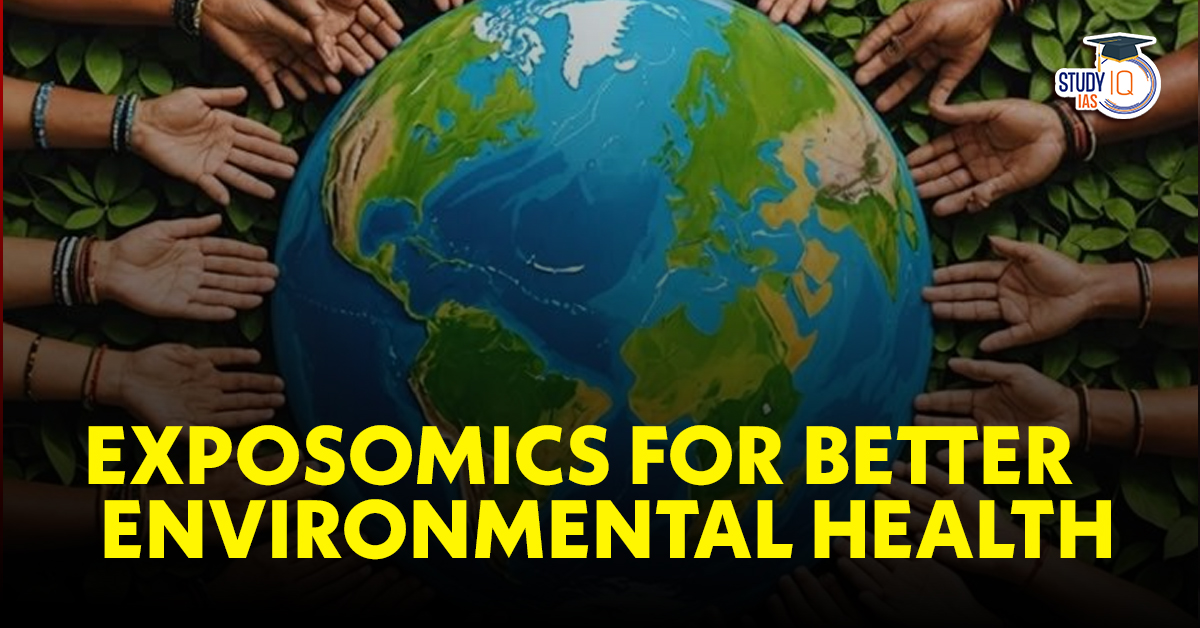Table of Contents
Context: World Environment Day 2025 focuses on ending plastic pollution. In India, environmental exposures are rising due to rapid development, demanding integrated health strategies like exposomics to reduce the environmental disease burden effectively.
Environmental Disease Burden
- Major Contributor to Global Mortality: In 2021, environmental and occupational risks caused 8 million global deaths (18.9%) and accounted for 14.4% of all DALYs.
- Leading Risk Factors Globally:
- Ambient PM2.5 air pollution: 4.7 million deaths
- Household air pollution (solid fuels): 3.1 million deaths
- India’s High Burden: ~3 million deaths and 100 million DALYs in India due to OEH risks.
- Contributes to over 50% of the burden of non-communicable diseases like heart disease, diabetes, and lung disorders.
- Lead exposure alone caused up to 154 million IQ points lost globally among children under 5, with India contributing 20%.
- Gaps in Current Estimates: Covers only 11 categories of risks.
- Excludes emerging threats like microplastics, chemical mixtures, noise, and climate change impacts.
- Fails to capture complex interactions among multiple risk factors over a lifetime.
|
Fact |
| India follows globally accepted scientific frameworks, primarily the Global Burden of Disease (GBD) methodology – Developed by WHO in 2000, to estimate its disease burden.
GBD Methodology
Key Features
|
How Exposomics Is a Solution for Environmental Disease Burden
- Captures Lifetime and Cumulative Exposures: Traditional studies focus on single or limited exposures.
- Exposomics maps all exposures — chemical, physical, biological, and psychosocial — across the entire lifespan, offering a more complete health risk profile.
- Reveals Complex Interactions: Many environmental factors act synergistically (e.g., air pollution + poor diet + stress),
- Exposomics helps detect how these exposures interact with genetics, lifestyle, and metabolism, leading to diseases like asthma, cancer, and diabetes.
- Enables Precision Prevention: By identifying personal exposure signatures, it allows for tailored public health interventions and early disease prediction, especially for non-communicable diseases (NCDs).
- Incorporates Emerging Hazards: Current Global Burden of Disease (GBD) estimates exclude microplastics, endocrine disruptors, noise pollution, etc.
- Exposomics includes novel and combined exposures to better estimate actual risks.
- Drives Innovation in Surveillance: Uses wearables, biosensors, and AI-based data integration to monitor real-time exposure.
- Helps build long-term environmental health surveillance systems for policymaking.
- Fosters Data-Driven Policy: Generates high-resolution exposure data that supports evidence-based environmental regulations, urban planning, and public health strategies.
|
What is the Exposome? |
| The exposome refers to the total lifetime environmental exposures an individual experiences — including chemical, physical, biological, psychosocial, and dietary factors — and their interactions with internal biology (genes, metabolism, epigenetics) that influence disease development. |


 UNEP Champions of the Earth Award: UN's ...
UNEP Champions of the Earth Award: UN's ...
 Shilp Didi Programme: Empowering Women A...
Shilp Didi Programme: Empowering Women A...
 Is the Falling Rupee a Cause for Alarm?
Is the Falling Rupee a Cause for Alarm?

























